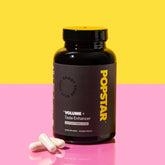Triple Penetration is a term used within men’s health and broader sexual health contexts to describe a unique form of intimate activity that involves multiple penetration sites or partners simultaneously. While this concept often sparks curiosity and raises questions about feasibility, safety, and emotional ramifications, it is essential to approach the topic from a medically informed perspective. In this comprehensive article, we will delve into what Triple Penetration entails, the potential health considerations, psychological factors, and key guidelines for safety and comfort. Our goal is to provide an overview that balances technical accuracy with engaging readability, ensuring a nuanced understanding of this complex topic.
Table of Contents
- Definition of Triple Penetration
- Medical Perspective on Triple Penetration
- How Does Triple Penetration Work Physically?
- Psychological and Relationship Factors
- Health and Safety Guidelines
- Frequently Asked Questions
- References
Definition of Triple Penetration
Triple Penetration refers to an intimate scenario where three simultaneous forms of penetration occur during a sexual encounter. In many discussions, this can involve multiple partners or, in some contexts, multiple orifices. It may include penetration of the anus, vagina, mouth, or a combination thereof. Although the concept is most commonly explored in contexts involving multiple participants, the term may vary based on individual experiences, preferences, and anatomical considerations.
It is vital to note that this practice goes beyond typical sexual exploration; it requires careful communication, precise coordination, and a thorough understanding of the potential health implications. The variation of participants, body positions, and orifices engaged can differ from one scenario to another. Nonetheless, the unifying factor is the involvement of three distinct penetrative acts happening simultaneously.
From a men’s health angle, Triple Penetration can bring about questions relating to sexual performance, comfort, and the physical impact on the body. LSI keywords to consider in this context include sexual function, male performance, intimacy, physical stamina, and consent. These terms help underscore aspects of men’s health that are especially pertinent when discussing more advanced or intensive forms of sexual activity. Proper investigation into the physical readiness for such activities becomes even more crucial when the level of complexity increases, emphasizing the need to understand your own body’s limitations.
Although this practice is relatively niche, it’s essential to clarify the motivations, potential risks, and knowledge needed to explore it safely. By understanding each aspect, individuals and partners can approach Triple Penetration responsibly, focusing on maintaining physical safety, nurturing positive emotional connections, and ensuring mutual satisfaction for everyone involved.
Medical Perspective on Triple Penetration
From a clinical standpoint, any penetrative sexual activity entails a range of physiological and anatomical considerations. When multiple forms of penetration are introduced simultaneously, strain on the body’s musculoskeletal and soft tissue structures can increase. The rectum, vagina, and oral cavity each have unique tissue capabilities, but adding more than one penetration can compound stress on these areas. This stress can manifest in potential micro-tears, increased friction, and an elevated risk of abrasions or infections if not approached with caution.
The sensitivity of these areas also varies between individuals. Some might experience heightened pleasure when different erogenous zones or orifices are stimulated together. Others could find it overwhelming or uncomfortable if not properly prepared. It is crucial to acknowledge that no two bodies are the same, and everyone’s threshold for comfort or discomfort can differ. For instance, the rectal and vaginal tissues have distinct pH levels and microbiomes, which can become unbalanced with certain forms of penetration if precautions like lubrication, condom usage, or hygiene measures are not observed.
Numerous men’s health professionals emphasize that a diverse range of sexual practices can be healthy and fulfilling as long as there is informed consent, mutual understanding of safe boundaries, and adequate protective measures. In the sphere of men’s sexual wellness, factors such as adequate blood flow, pelvic floor muscle tone, and joint dexterity also come into play during more involved sexual positions or activities. Thus, considering a holistic medical perspective ensures that individuals are aware of both the potential physical challenges and the ways to mitigate them.
For those who have a history of pelvic injuries, surgeries, or chronic conditions (like hemorrhoids, incontinence, or certain gastrointestinal issues), consulting a healthcare professional before attempting complex sexual activities is advisable. A proactive approach can help identify potential vulnerabilities and set guidelines to prevent complications. The key takeaway from a medical standpoint is balancing exploration with caution, informed decision-making, and honest communication with sexual partners.
How Does Triple Penetration Work Physically?
Triple Penetration hinges on the body’s ability to accommodate simultaneous stimuli in multiple erogenous zones or orifices. Physiologically, each penetrative act may exert pressure on localized tissues, including the muscles of the pelvic floor, which are integral to stabilizing the pelvic region and maintaining continence. When these muscles are stretched beyond their typical range, additional care is needed.
During more conventional forms of intercourse, tissues in the vagina or anus can adapt to penetration over time. However, adding multiple points of penetration intensifies this requirement for adaptability. That is why gradual acclimatization, patience, and open dialogue are critical to preventing injury. Factors that support a more comfortable experience may include:
- Extended Foreplay: Prolonged foreplay helps lubricate tissues naturally, enhancing blood flow to erogenous zones and reducing friction.
- Ample Lubrication: High-quality, body-safe lubricants reduce friction-related trauma and help balance moisture levels.
- Positioning: Clear communication about comfort levels and positioning can help distribute weight and pressure more evenly, minimizing strain.
Blood flow plays a critical role in sexual arousal. Adequate blood flow helps lubricate tissues, maintain erectile function, and support orgasmic response. Triple Penetration, when approached without adequate preparation, can quickly lead to discomfort or even injury if one or more participants need additional support or time to acclimate. Slow pacing, combined with observational feedback from all parties involved, offers a measure of safety and comfort that would be difficult to achieve otherwise.
For men, in particular, factors like stamina, erectile durability, and angle considerations can influence the feasibility of Triple Penetration. Anatomical differences, such as penis size or the presence of certain conditions, can affect the ease with which multiple penetrations occur. Hormonal balances, general fitness, and mental state also intersect with purely physical concerns. Additionally, breathing techniques often help reduce tension in the pelvic region, encouraging relaxation and potentially facilitating a more enjoyable experience overall.
Psychological and Relationship Factors
We often focus on the physical aspects of Triple Penetration, but psychological preparedness is equally significant. Engaging in activities that deviate from conventional norms can evoke feelings of vulnerability, excitement, or even apprehension. Understanding why you or a partner might want to explore Triple Penetration is an essential conversation to have prior to taking action. LSI keywords like emotional well-being, trust, communication skills, and conflict resolution highlight the essential facets of successful group encounters.
Communication stands as one of the most vital elements. Clear, transparent conversation ensures everyone involved has realistic expectations and a certain degree of comfort. If one or more partners are hesitant, coerced, or not fully informed, the emotional strain can overshadow any potential physical pleasure. On the other hand, when all parties are fully consenting and informed, it can open the door to new avenues of sexual exploration, intimacy, and bonding. Nevertheless, it’s recommended to approach these experiences as an ongoing dialogue rather than a single event. Checking in with each other, both before and after, fosters emotional safety and can mitigate potential regrets.
Additionally, personal values and cultural or religious backgrounds may influence how an individual perceives Triple Penetration. Open-minded exploration can be fulfilling, but it can also challenge deeply held beliefs. People may experience guilt, emotional conflict, or positivistic acceptance, depending on their internal frameworks. Recognizing your own limitations and ensuring that each participant’s comfort and boundaries are respected is paramount.
Health and Safety Guidelines
Safety cannot be overstated when it comes to any unconventional sexual practice, and Triple Penetration has its own unique set of concerns. Taking preventive steps and adhering to best practices will help minimize risks and optimize the potential for a positive experience.
Here are several guidelines to keep in mind:
- Consent and Communication: Every participant should provide enthusiastic, informed consent. Discuss boundaries, comfort levels, and safe words or gestures to signal if a pause or cessation is needed.
- Barrier Protection: Utilizing condoms or dental dams for each penetration site can drastically reduce the risk of sexually transmitted infections (STIs). Change condoms whenever switching from one orifice to another to maintain hygiene and microbiome balance.
- Lubrication: The friction involved in multiple penetrations can be substantial. High-quality, body-safe lubricants (water-based or silicone-based) help lower the risk of tears or chafing.
- General Hygiene: Clean genitals, hands, and any objects involved before engaging in sexual activities to reduce bacterial transfer. This step is particularly crucial for anal play; thorough cleansing significantly minimizes infection risks.
- Positioning and Pace: Choose positions that allow comfortable angling and leverage without placing excessive strain on limbs or joints. Moving slowly and incrementally helps the body adapt.
- Physical Readiness: Ensure that no participant has injuries, active infections, or other conditions that might be exacerbated by strain. If in doubt, consult with a healthcare professional.
- Aftercare: Post-activity care includes gentle cleaning, hydration, and open conversations about the emotional and physical sensations experienced. This time aids in recovery and affirms emotional well-being.
Preparing yourself physically and mentally for any strenuous activity can improve safety outcomes. Basic stretches targeting hips and lower back, coupled with regular Kegel exercises that strengthen the pelvic floor muscles, can enhance flexibility and control for both men and women. Further, acknowledging that everyone’s body has limitations is key—pushing beyond comfort for the sake of experimenting can lead to injury or emotional distress.
When approached responsibly, Triple Penetration can be one of numerous options in a broad sexual repertoire. The priority, however, remains ensuring that everyone involved can engage without fear, pain, or undue risk. Taking the time to explore each of these guidelines can maximize both safety and enjoyment.
Frequently Asked Questions
What is Triple Penetration?
Triple Penetration commonly refers to a scenario in which three penetration acts happen at once, whether through different orifices or with multiple partners. While often considered an advanced form of sexual experience, the specific configuration can vary greatly. It demands meticulous communication, respect for boundaries, and attention to safety measures.
Is Triple Penetration Physically Safe?
Triple Penetration can be physically safe if approached with caution, preparation, and informed consent. However, it does carry heightened risks of tissue damage, micro-tears, and infection. Adequate lubrication, gentle entry, and regular check-ins during the activity help to alleviate these risks. In all instances, if discomfort arises, it’s recommended to pause or stop immediately.
Can Triple Penetration Lead to Injuries?
Yes, if not performed safely it can lead to injuries such as tears, bruising, or strain on the muscles of the pelvic region. Using ample lubrication, communicating continuously, and avoiding sudden, forceful movements are effective methods of minimizing harm. If any pain or bleeding occurs, do not attempt to continue without a full evaluation of the cause.
How Can I Reduce the Risk of STIs?
The main way to mitigate STI risks is by using barrier protection (e.g., condoms or dental dams) for each site of penetration and changing them if switching from one orifice to another. Regular sexual health screenings and open discussions about sexual history are also essential steps in reducing the likelihood of transmitting infections. Good personal hygiene and avoiding contact with broken skin or open sores are likewise important measures.
Are There Alternatives to Triple Penetration for Variety?
Yes. If Triple Penetration feels too complex or intimidating, couples or groups can explore dual penetration (DP) scenarios, mutual oral stimulation, or other forms of multi-sensory play. Various tantric techniques, role-playing, or the incorporation of different intimate toys can also provide diverse, exciting experiences without the additional strain that Triple Penetration may involve.
What Role Does Communication Play in Triple Penetration?
Communication is critical. Because Triple Penetration involves multiple points of penetration or multiple people, misunderstanding or lack of clarity can lead to physical and emotional discomfort. Setting expectations, establishing safewords, and consistently checking in with each participant can enhance the experience and prevent potential harm.
How Important Is Lubrication?
Lubrication is extremely important, as it reduces friction and helps protect the delicate tissues of the anus, vagina, and even oral cavity (to a lesser extent). Many find that layering different types of lubricants—water-based for the first layer and silicone-based on top—can offer sustained moisture and comfort. Ensuring you have an adequate supply of high-quality lube and reapplying as needed decreases the risk of tear injuries.
Can Triple Penetration Boost Sexual Health or Performance?
Whether Triple Penetration can boost an individual’s sexual health or performance is subjective. On one hand, it may enhance sexual exploration, novelty, and excitement, contributing to overall satisfaction. On the other hand, overexertion or stress can lead to performance anxiety, especially if a participant feels pressure to maintain simultaneous forms of penetration. It is best to proceed with measured expectations, focusing on communication and comfort to potentially reap benefits without undue stress.
Does Triple Penetration Require Special Positions?
Yes, specialized or carefully adapted positions are typically required for Triple Penetration. These positions often involve precise angling of the participants and may require strong core stability, good balance, or even additional support from furniture or cushions. Every body is different, so experimenting with variations that feel comfortable and safe is crucial. Communication about what is physically possible or pleasurable for each participant is once again essential.
Could Triple Penetration Lead to Emotional or Psychological Stress?
It can, especially if participants enter into the experience without unified expectations or if someone feels uncomfortable at any stage. Jealousy, body image issues, or unfamiliar power dynamics might surface. Addressing any potential concerns before, during, and after the experience through open dialogue is a fundamental step in managing and reducing emotional or psychological stress.
Is Triple Penetration Recommended for Beginners?
Generally, it is not recommended for individuals new to sexual exploration. Beginners may want to establish comfort with standard or dual penetrative experiences first. Acclimating to higher-intensity activities takes time and practice. Those who rush may encounter unnecessary discomfort or pain. Listening to your body, going slow, and incrementally building up your tolerance can lay a foundation for exploring more advanced realms of intimacy responsibly.
How Do We Handle Consent with Multiple Partners?
Consent must be explicitly given and can also be revoked at any time for any reason. In multi-partner scenarios, it’s vital that each person independently affirms they want to participate, understands the potential risks, and is comfortable continuing. Any sign of hesitation should prompt an immediate pause in activity. Affirmative consent is the bedrock of safe sexual exploration, including scenarios like Triple Penetration.
Are There Special Concerns for Older Adults or Those with Medical Conditions?
Older adults or individuals with pre-existing health conditions such as heart problems, arthritis, or compromised immune systems may need additional caution. Checking with a healthcare provider for personalized guidance is advised. Proper management of chronic conditions, awareness of medication side effects, and adapting positions to ensure comfort can help in successfully navigating advanced sexual activities.
References
- Smith, P. (2020). "Pelvic Floor Health in Advanced Sexual Practices." Journal of Men’s Health, 12(4), 230-238.
- Johnson, L. & Ramirez, A. (2019). "Enhancing Communication & Consent in Multi-Partner Sexual Activities." Sexual Wellness Quarterly, 8(2), 45-59.
- Thompson, G. (2021). Human Anatomy and Sexual Function: An Integrative Approach. HealthStar Press.




















































